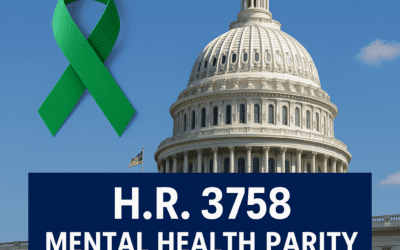Mark D. DeBofsky is a name partner of DeBofsky Law — on the web at debofsky.com. He handles civil and appellate litigation involving employee benefits, disability insurance and other insurance claims and coverage issues. He can be reached at [email protected]
While most ERISA claims are heard in federal court, claims for benefits may also be brought in state court. The ERISA statute provides for concurrent jurisdiction in both the state and federal courts for benefits due under the terms of an employee benefit plan, although ERISA claims filed in state court are removable to federal court.
A recent example of an ERISA case decided in a state court is the Illinois Appellate Court decision in Watkins v. M Class Mining Health Prot. Plan, 2020 IL App (5th) 180138; 2020 Ill. App. LEXIS 295 (5th Dist. May 7), which involved a claim for health benefits. This matter, which was filed in Madison County Circuit Court, was not removed and was decided by that court and ultimately by the Illinois 5th District Appellate Court.
The issue in the case had to do with the applicability of an illegal act exclusion in a self-funded health benefit plan. Because the court determined the exclusion was improperly invoked, the court entered judgment for the plaintiff in the sum of $1.2 million and also issued an award of attorney fees in the sum of $107,214 under ERISA’s fee-shifting provision, 29 U.S.C. Sec. 1132(g)(1).
The so-called illegal act was that the driver who was injured in a single car accident was driving without auto insurance. The medical bills topped $1 million, although the plan argued it should only be found liable for $236,622, the amount it would have paid after the application of discounts if the claim had been covered.
After rejecting an argument that Madison County was an improper venue, the court turned to a number of ERISA issues. The benefit plan contained language granting discretionary authority to the plan administrator to interpret the plan and make coverage determinations. However, since the benefit determination was made by a separate party that was not clothed with discretionary authority nor delegated such authority, the court determined that no discretion was due the claim determination and applied the de novo standard of judicial review.
The court next turned to the question of whether the illegal act exclusion barred the claim. The exclusion states the plan does not cover charges for care, supplies, or services “[t]hat are to treat [i]njuries sustained or a [s]ickness contracted while the participant committed or attempted to commit a felony or misdemeanor, or was engaged in an illegal occupation or activity.” The circuit court found that provision ambiguous and applied the doctrine of contra proferentem to construe the ambiguity against the plan.
The appellate court specifically examined two terms in the exclusion — “while” and “illegal activity.” Examining those issues in reverse order, the plaintiff argued that the term “illegal activity” is ambiguous and that the plan’s interpretation was contrary to a reasonable expectation that the term would not encompass “any activity contrary to law, irrespective of the level of wrongdoing.” The court rejected that argument, however, based on Tourdot v. Rockford Health Plans Inc., 439 F.3d 351, 354 (7th Cir. 2006), which found the phrase “’illegal acts’” was unambiguous and meant “any activity contrary to law.”
Since driving an automobile without liability insurance is unlawful in Illinois pursuant to 625 ILCS 5/3-707(a), the court agreed with the defendant that the driver “engaged” in an “illegal … activity” by driving without having liability insurance at the time she was injured. However, that finding did not save the day for the plan because the court determined the word “while” in the exclusion required there to be a causal nexus between the illegal act and the injury. Finding the record contained no evidence of a causal link, the court affirmed the entry of summary judgment for the plaintiff.
The court also upheld the judgment amount, finding the defendant failed to introduce any evidence in support of its argument that the measure of damages would be the amount the plan would have paid had the claim been processed in the ordinary course of business. Instead, the court upheld the lower court’s judgment in the amount of the outstanding charges billed by the medical providers. The court also affirmed the fee award.
The court’s analysis of ERISA issues that are rarely heard in state courts was thorough and accurate. However, the Tourdot ruling cited by the court may no longer be viable since the Supreme Court found the word “crime” ambiguous in United States v. Stitt, 139 S. Ct. 399, 405 (2018) (noting, in a case concerning the Armed Career Criminal Act, that “the word ‘crime’ itself[ ] is ambiguous”); Am. Family Life Assurance Co. v. Bilyeu, 921 F.2d 87, 89–90 (6th Cir. 1990) (per curiam) (affirming district court’s conclusion that “the contractual language regarding commission of a crime” is ambiguous).
The illegal act exclusion would also be limited by Illinois law. According to 215 ILCS 5/367k, it is unlawful to exclude coverage in a major medical policy issued or delivered in Illinois for injuries incurred while the insured is intoxicated or under the influence of any narcotic “regardless of whether the intoxicant or narcotic is administered on the advice of a health care practitioner.” Since it is unlawful to drive a car under the influence of drugs or alcohol, section 367k would trump an illegal acts exclusion in a health insurance policy, although self-funded plans governed by ERISA would not be subject to that provision.
Imposing a causal nexus requirement, as the court did here, is the key to avoidance of an absurd result. For example, would a plan containing an illegal act or crime exclusion not reimburse an injured driver who failed to wear a seatbelt as required by law? Or what if someone who is speeding suffers injuries when rear-ended by another driver? Neither situation should be grounds to exclude coverage.
Indeed, in other circumstances, imposing a causal nexus requirement has avoided illogical results. For example, in Holloway v. J.C. Penney Life Ins. Co., 190 F.3d 838, 839 (7th Cir. 1999), the 7th U.S. Circuit Court of Appeals found a status intoxication exclusion in a life insurance policy contrary to the public policy of the state of Illinois — “Under Penney’s version of the policy, if the insured was sitting on her porch drinking beer and was struck by a meteor, she would not be covered by the policy.” Thus, requiring a causal nexus is critical to the avoidance of nonsensical outcomes.
©2020 by Law Bulletin Media. Content on this site is protected by the copyright laws of the United States. The copyright laws prohibit any copying, redistributing, or retransmitting of any copyright-protected material. The content is NOT WARRANTED as to quality, accuracy or completeness, but is believed to be accurate at the time of compilation. Websites for other organizations are referenced at this site; however, the Law Bulletin Media does not endorse or imply endorsement as to the content of these websites. By using this site you agree to the Terms, Conditions and Disclaimer. Law Bulletin Media values its customers and has a Privacy Policy for users of this website.






